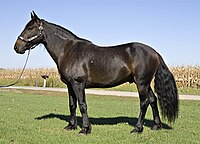
Photo from wikipedia
Abstract Perchlorate (ClO4−), a persistent inorganic compound, has harmful effects on human health. Natural ClO4− is formed in the atmosphere and enters into the surface environment through deposition. However, the… Click to show full abstract
Abstract Perchlorate (ClO4−), a persistent inorganic compound, has harmful effects on human health. Natural ClO4− is formed in the atmosphere and enters into the surface environment through deposition. However, the knowledge on the occurrence, spatial variability and sinks of natural ClO4− in different environments remains limited, especially in the polar regions. Here, we investigate the sources and sinks of ClO4− in soil collected in three ice-free areas in coastal Antarctica, where the research stations and wildlife colonies are mainly distributed. No statistically significant difference in ClO4− concentrations between sites near and away from the stations suggests that local human presence is not a significant source of ClO4− in soil. Concentrations of ClO4− in soil from wildlife colonies are not significantly higher than those from sites with no intense wildlife activities, indicating that wildlife activities have no significant influences on ClO4− in soil. Thus, atmospherically formed ClO4− is the main source for soil in Antarctica. In general, ClO4− concentrations (0.1–5.1 μg kg−1) in soil in this study are much lower than those in the arid environments and comparable to those in the unsaturated zones. Leaching by snow meltwater may be the main sink for ClO4− in soil, and deeper depths for aqueous migration may contribute to the lower ClO4− concentrations in Antarctic surface soil compared to the values in the arid areas with low precipitation amount. Due to the biological origin of NO3−, no correlation between NO3− and ClO4− in soil is observed in this study, different from the observations in arid areas. In addition, no significant correlation is observed between organic matter contents and ClO4− concentrations in soil, suggesting that biological reduction is not an important sink for ClO4− in Antarctic soil.
Journal Title: CATENA
Year Published: 2021
Link to full text (if available)
Share on Social Media: Sign Up to like & get
recommendations!